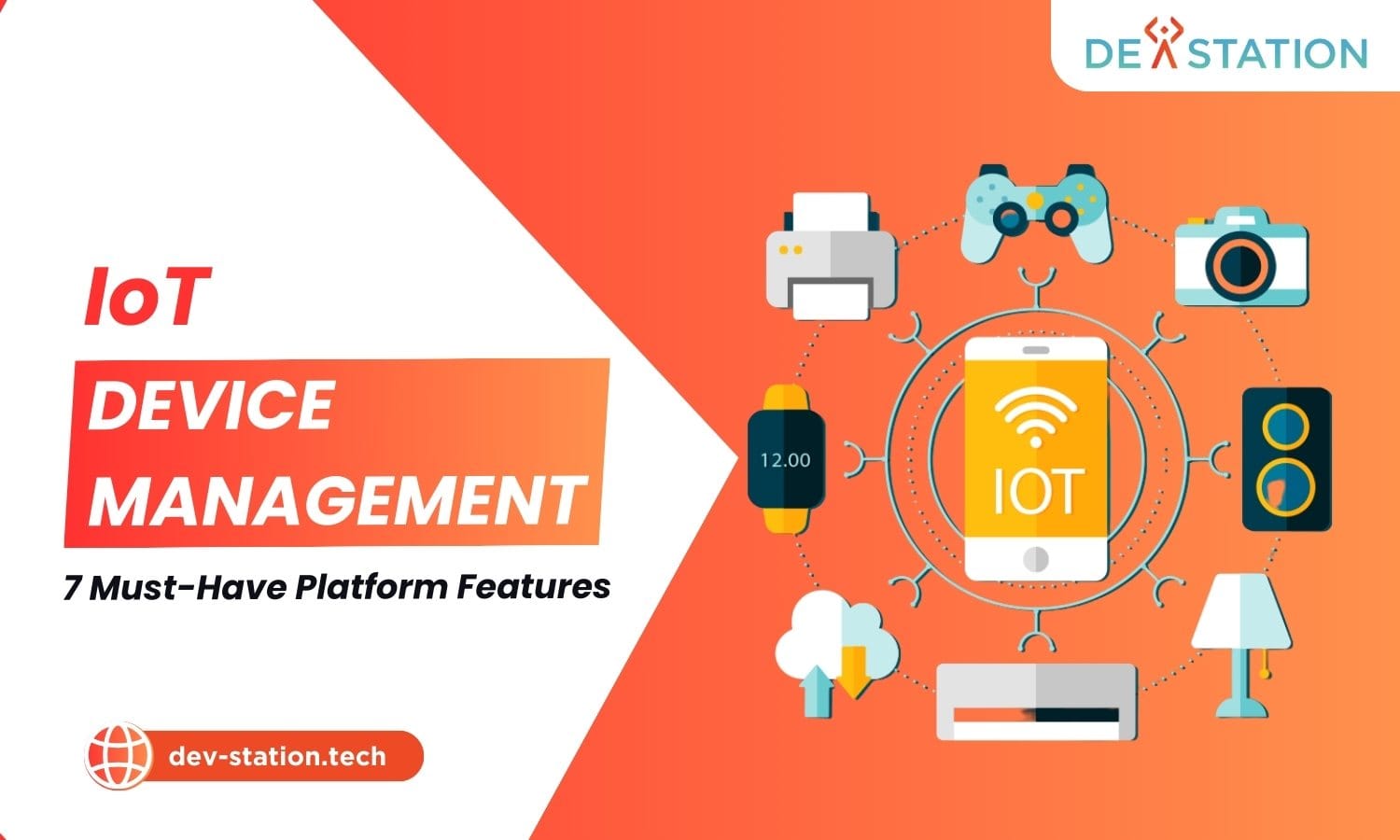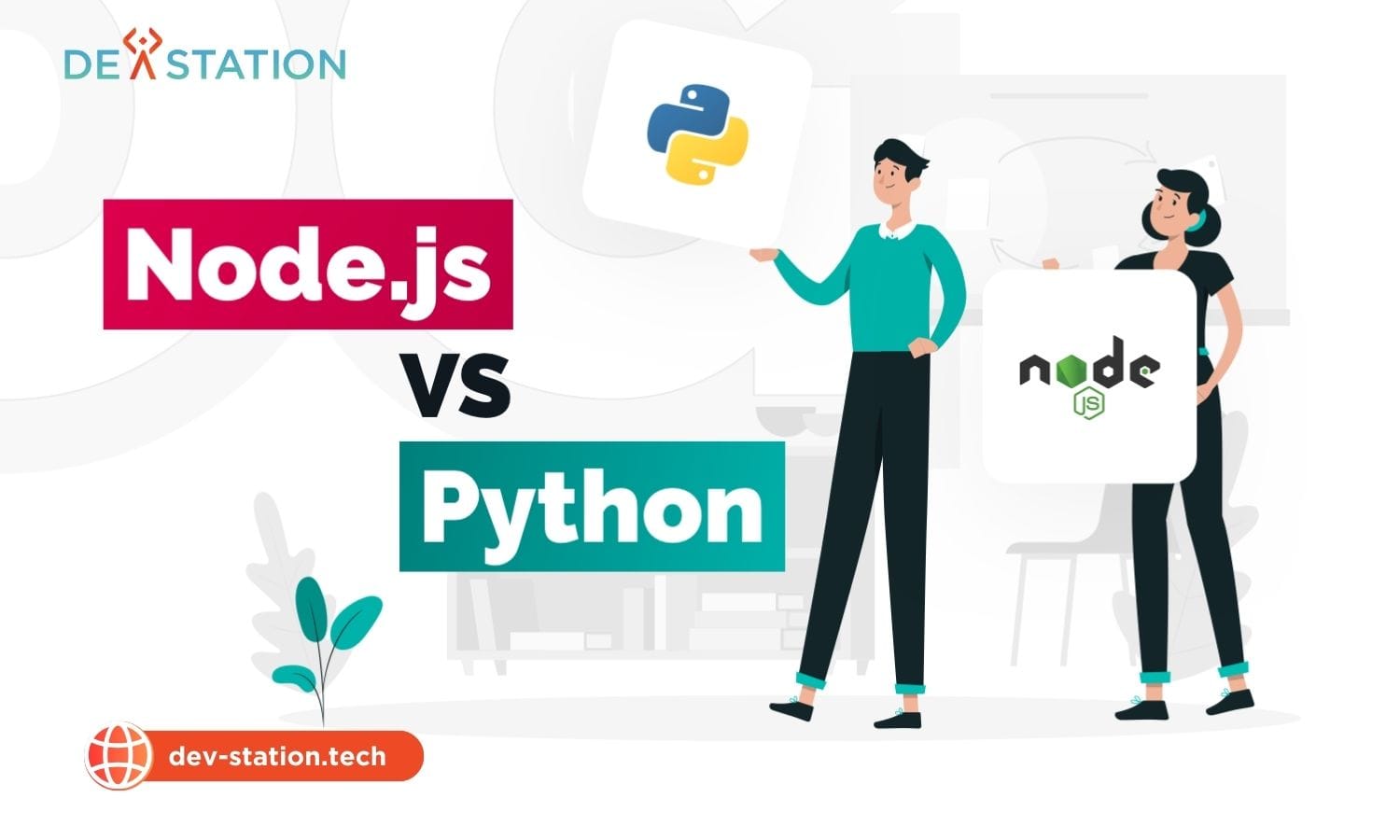IoT device management platforms provide the essential framework for overseeing connected device lifecycles, and selecting a future-proof solution is critical for scalable and secure operations. Dev Station Technology offers advanced remote IoT device management software that ensures your growing fleet remains efficient, secure, and easy to manage. A robust device manager simplifies everything from initial setup to ongoing maintenance and secure decommissioning.
Contents
ToggleWhat Are The 7 Must-Have Features for Your IoT Device Management Platform in 2025?
The Internet of Things is expanding at an extraordinary rate. Projections from IDC suggest there will be approximately 41.6 billion connected IoT devices by 2025. This explosion of connected endpoints makes choosing the right management platform more critical than ever. Without a comprehensive solution, businesses risk facing overwhelming challenges in security, scalability, and operational efficiency.
A top-tier platform is not just a tool but a foundational element for achieving a positive return on investment and maintaining a competitive advantage in an increasingly connected world.
1. How Can You Ensure Robust Security and Authentication?
Security is not just a feature; it is the most critical requirement for any IoT deployment. In 2025, with daily hacking attempts on IoT ecosystems averaging over 820,000, a 46% increase from the previous year, weak security is a direct threat to your entire organization. Furthermore, research shows that over 50% of IoT devices harbor critical vulnerabilities. An effective iot security strategy must be integrated into every stage of the device lifecycle.
Your chosen platform must support security-by-design principles. This starts with unique device identities and credentials, often managed through X.509 certificates and a secure provisioning process. All data communication, from the device to the cloud, must be encrypted using protocols like TLS. The platform should also enable you to enforce strong password policies and manage access controls meticulously, ensuring only authorized users and systems can interact with your devices.
2. Can Your Platform Handle Scalable Device Provisioning and Onboarding?
Scalability is a primary concern when moving from a proof-of-concept to a full-scale deployment. Manually configuring hundreds or thousands of devices is not feasible. A top-tier IoT device management platform automates this entire process. With zero-touch provisioning, a new device can securely connect to the network, authenticate itself, download the latest configuration and firmware, and begin operating without any human intervention.
This capability is essential for managing large, geographically dispersed fleets, such as smart meters or connected vehicles. Look for platforms that allow you to create device templates and apply configurations to entire groups of devices at once, ensuring consistency and control as your deployment expands.
3. Does the Platform Offer Seamless Over-the-Air (OTA) Updates?
OTA updates are non-negotiable for long-term IoT success. Unpatched firmware is responsible for a staggering 60% of IoT security breaches. The ability to remotely update devices is the only practical way to address security threats and bugs after deployment. A superior IoT device management platform will offer a robust OTA update module that includes features like:
- Update Campaign Management: The ability to schedule updates, deploy them to specific device groups, and monitor the progress of the rollout in real-time.
- Failsafe Mechanisms: Ensuring that an update failure (due to power loss or connectivity issues) does not leave the device in an unusable state. The device should be able to roll back to its previous working version.
- Bandwidth Optimization: For devices on cellular or other metered connections, the platform should support delta updates, where only the changes in the code are sent, rather than the entire firmware image.
OTA updates significantly reduce maintenance costs and extend the functional lifespan of your devices, delivering continuous value and protecting your initial investment.
4. What About Centralized Monitoring and Diagnostics?
Managing a large IoT fleet without a centralized view is like flying a plane blindfolded. A powerful remote IoT device management software solution offers a customizable dashboard that provides a unified view of all your assets. This enables you to instantly assess the health of your network and drill down into individual devices. Key monitoring capabilities include:
| Monitoring Capability | Benefit |
|---|---|
| Real-Time Status | Instantly see which devices are online, offline, or reporting errors. |
| Performance Metrics | Track CPU usage, memory consumption, signal strength, and battery levels. |
| Remote Diagnostics | Access device logs, execute commands remotely, and reboot devices to resolve issues without dispatching a technician. |
Proactive monitoring helps you move from a reactive to a predictive maintenance model, identifying potential failures before they cause costly downtime. A solid iot architecture is the backbone that makes this level of monitoring possible.
5. Does the Platform Offer Comprehensive Analytics and Reporting?
Your IoT devices generate a massive stream of telemetry data. The value of this data is unlocked through analytics. An advanced IoT platform will provide built-in tools for data aggregation and visualization, allowing you to create custom dashboards that display key performance indicators (KPIs). For instance, a logistics company can visualize its entire fleet on a map, monitor fuel consumption trends, and analyze driver behavior to optimize routes.
This data-driven approach leads to significant cost savings and operational improvements. Some platforms even integrate with machine learning services to enable predictive analytics, such as forecasting equipment failure or predicting inventory needs. The efficiency of data transmission relies on well-defined iot protocols like mqtt and coap.
6. How Flexible and Powerful Is the Rule Engine?
A rule engine allows you to configure `if-this-then-that` logic. For example, if a temperature sensor in a refrigerated truck reports a value above a certain threshold, the rule engine can automatically trigger a series of actions: create an alarm on the dashboard, send an SMS alert to the fleet manager, and log the event in an external maintenance system.
This level of automation is transformative. A flexible rule engine should provide a user-friendly interface for building these logic chains and support a wide range of actions, including:
- Notifications: Sending alerts via email, SMS, or other messaging platforms.
- Control Actions: Sending commands back to devices, such as turning on a fan or shutting off a valve.
- External Integrations: Forwarding processed data to third-party systems like ERPs, CRMs, or other cloud services via API calls.
This feature is what allows your IoT solution to react intelligently to changing conditions in real time. The choice of connectivity, such as lora or zigbee, directly impacts the responsiveness of these rules.
7. Does the Platform Support Interoperability and API Access?
Your IoT solution does not exist in a vacuum. It needs to share data with your other critical business systems, such as your ERP for inventory management or your CRM for customer service. A platform that prioritizes interoperability will offer comprehensive REST APIs and support for various integration methods.
This allows you to build custom workflows and create a cohesive, unified data ecosystem across your entire organization. A powerful iot gateway can facilitate this integration by translating between different device protocols and the platform’s API. This open approach ensures that your IoT platform can adapt and grow with your business needs, rather than becoming an isolated data silo.
How Can Dev Station Technology Help You Succeed?
Choosing the right remote IoT device management software is a strategic decision that will impact your business for years to come. The platform you select must be secure, scalable, and flexible enough to meet your evolving needs. By prioritizing these seven essential features, you can build a robust foundation for a successful and valuable IoT initiative.
At Dev Station Technology, we provide IoT device management solutions that are built to address these critical requirements. Our platform is designed for scalability and security from the ground up, empowering you with the centralized control and actionable insights needed to manage your device fleet effectively.
To learn more about how our platform can transform your operations, contact Dev Station Technology for a consultation. Visit us at dev-station.tech or email our team at sale@dev-station.tech.





